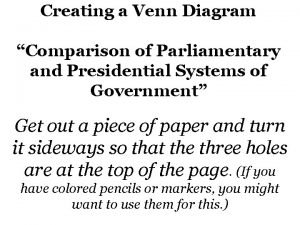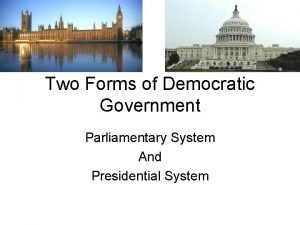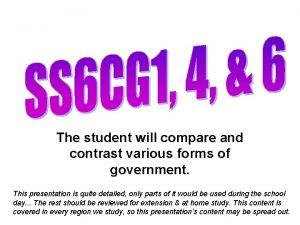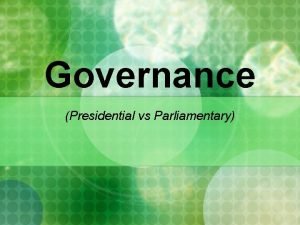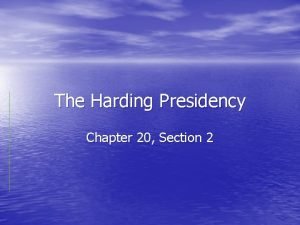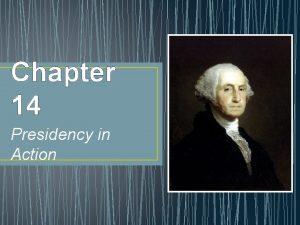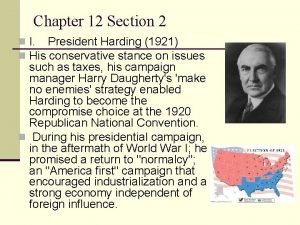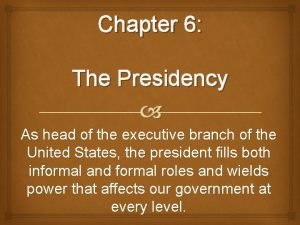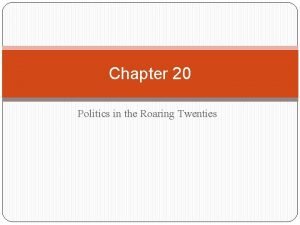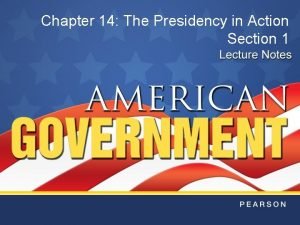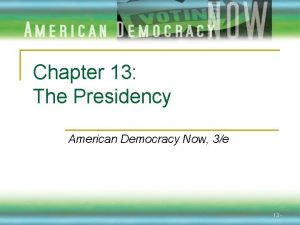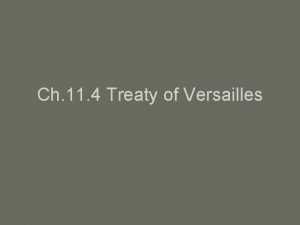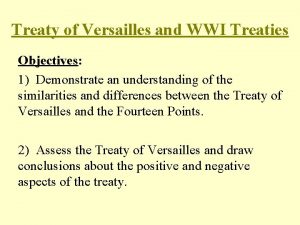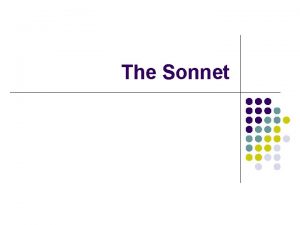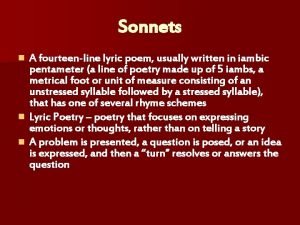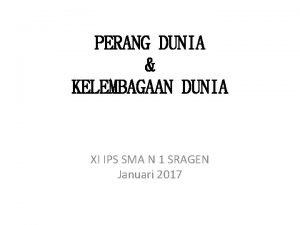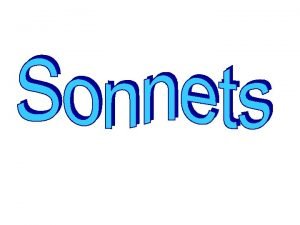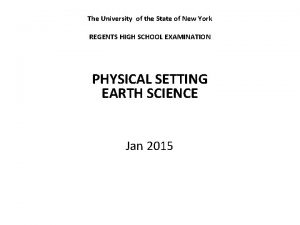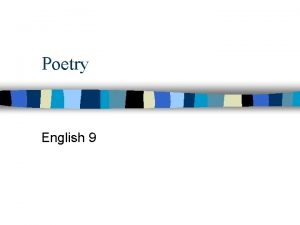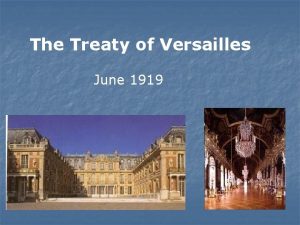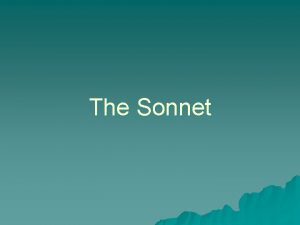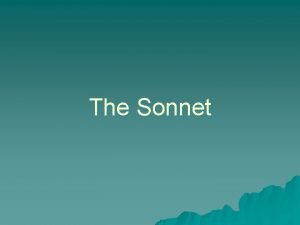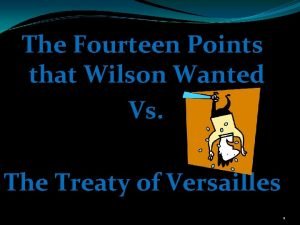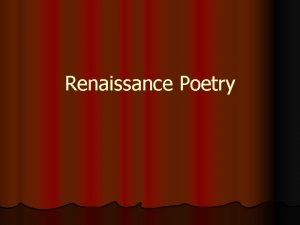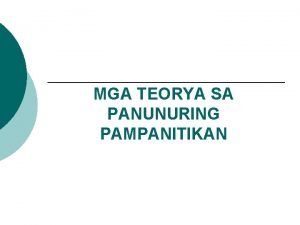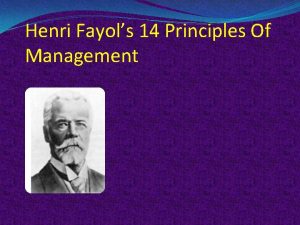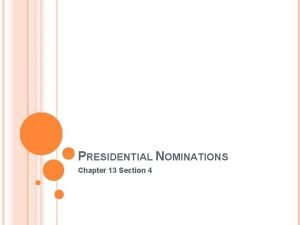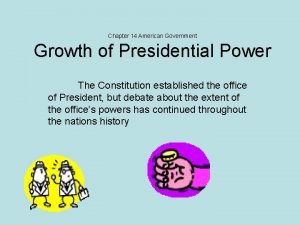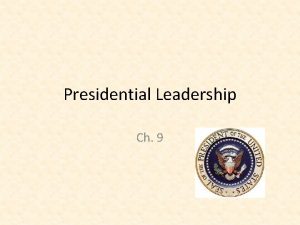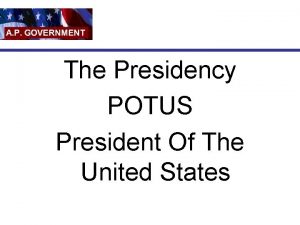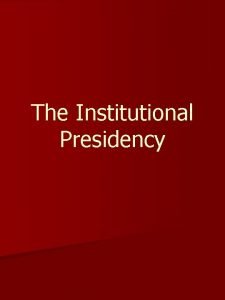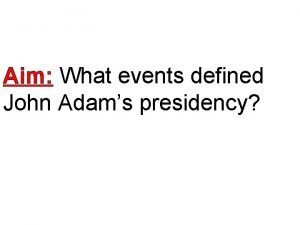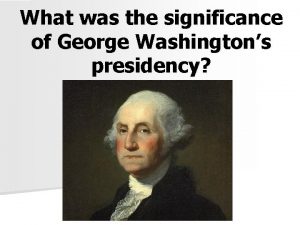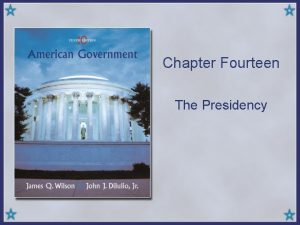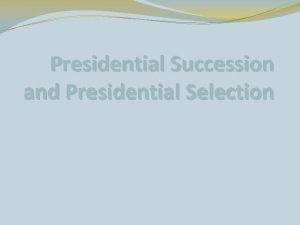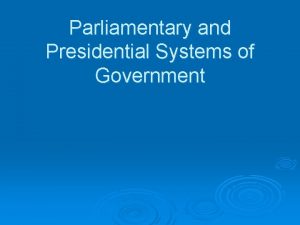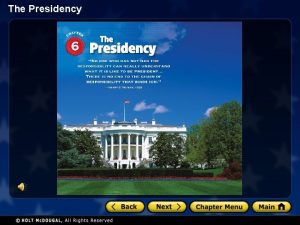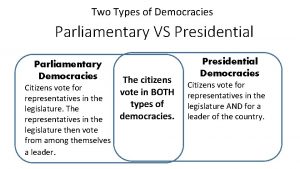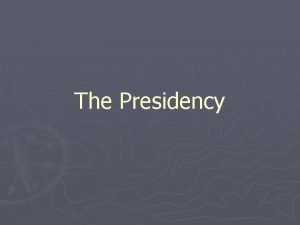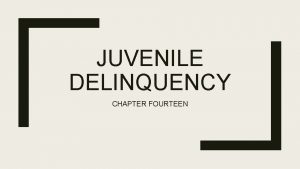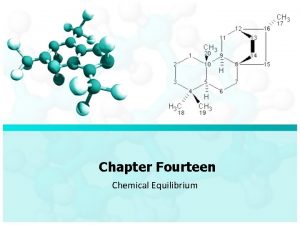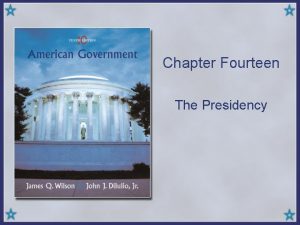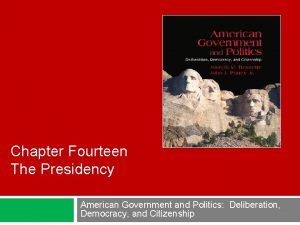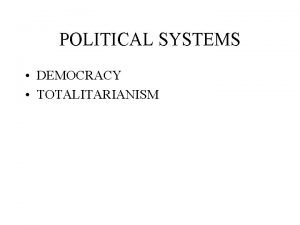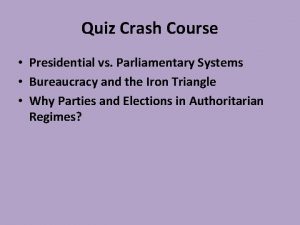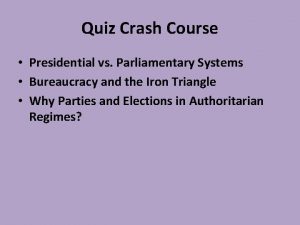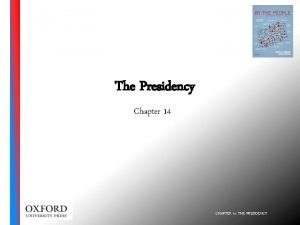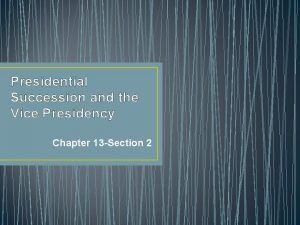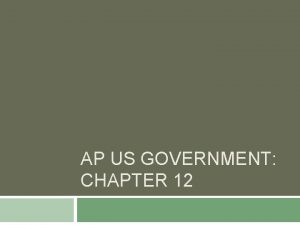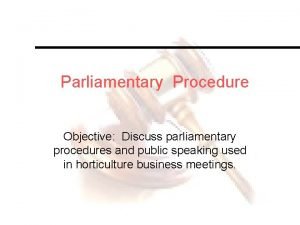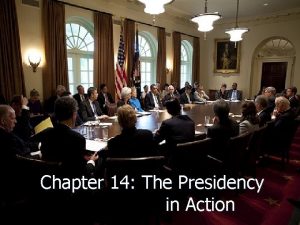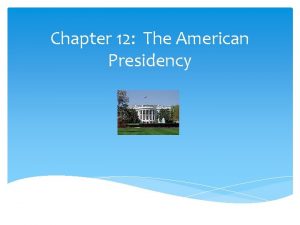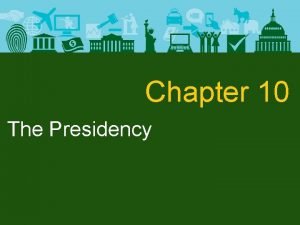Chapter Fourteen The Presidency Presidential and Parliamentary Systems






































- Slides: 38

Chapter Fourteen The Presidency

Presidential and Parliamentary Systems • Presidents may be outsiders; prime ministers are always insiders, chosen by the members of the majority party in parliament • Presidents have no guaranteed majority in the legislature; prime ministers always have a majority • Divided government: one party controls the White House and another controls one or both houses of Congress Copyright © Houghton Mifflin Company. All rights reserved. 2

Electoral College • Almost all states use a winner-take-all system • If no candidate won a majority, the House would decide the election • The Electoral College ultimately worked differently than expected, because the Founders did not anticipate the role of political parties Copyright © Houghton Mifflin Company. All rights reserved. 3

The First Presidents • The office was legitimated by men active in independence and Founding politics • Minimal activism of early government contributed to lessening the fear of the presidency • Relations with Congress were reserved: few vetoes; no advice from Congress to the president Copyright © Houghton Mifflin Company. All rights reserved. 4

• Jacksonians • Reemergence of Congress 18361936 • Exceptions- A Lincoln, T Roosevelt, W Wilson, • Roosevelt and the New Deal Copyright © Houghton Mifflin Company. All rights reserved. 5

• Imperial Presidency Copyright © Houghton Mifflin Company. All rights reserved. 6

Powers of the President • Potential for power found in ambiguous clauses of the Constitution—e. g. , power as commander in chief, duty to “take care that laws be faithfully executed” (executive power) • Greatest source of power lies in politics and public opinion Copyright © Houghton Mifflin Company. All rights reserved. 7

The Power to Persuade • Presidents try to transform popularity into congressional support for their programs • Presidential coattails have had a declining effect for years • Popularity is affected by factors beyond anyone’s control – consider Bush’s approval ratings following the September 11 th attacks Copyright © Houghton Mifflin Company. All rights reserved. 8

Figure 14. 2: Presidential Popularity Thomas E. Cronin, The State of the Presidency (Boston: Little, Brown, 1975), 110 -111. Copyright © 1975 by Little, Brown and Company, Inc. Reprinted by permission. Updated with Gallup poll data, 1976 -2004. Reprinted by permission of the Gallup Poll News Service. Copyright © Houghton Mifflin Company. All rights reserved. 9

Figure 14. 2: Presidential Popularity Thomas E. Cronin, The State of the Presidency (Boston: Little, Brown, 1975), 110 -111. Copyright © 1975 by Little, Brown and Company, Inc. Reprinted by permission. Updated with Gallup poll data, 1976 -2004. Reprinted by permission of the Gallup Poll News Service. Copyright © Houghton Mifflin Company. All rights reserved. 10

Figure 14. 3: Presidential Victories on Votes in Congress, 1953 -2002 Copyright © Houghton Mifflin Company. All rights reserved. 11

White House Office • Did not have much staff until 1857 • Has grown enormously • More difficult to control Copyright © Houghton Mifflin Company. All rights reserved. 12

White House Office • • President’s closest assistants Typically worked on campaign Does not require approval Rule of propinquity: power is wielded by people who are in the room when a decision is made • Three types of structure Copyright © Houghton Mifflin Company. All rights reserved. 13

White House Office • Pyramid structure: most assistants report through hierarchy to chief of staff, who then reports to president – Eisenhower, Nixon, Reagan, Bush, Clinton (late in his administration) Copyright © Houghton Mifflin Company. All rights reserved. 14

White House Office • Circular structure: cabinet secretaries and assistants report directly to the president – Carter (early in his administration) • Ad hoc structure: task forces, committees, and informal groups deal directly with president – Clinton (early in his administration) Copyright © Houghton Mifflin Company. All rights reserved. 15

Figure 14. 1: Growth of the White House Staff, 1945 -2002 Harold W. Stanley and Richard G. Niemi, Vital Statistics on American Politics, 2003 -2004 (Washington, D. C. : Congressional Quarterly Press, 2003), 254 -255. Copyright © Houghton Mifflin Company. All rights reserved. 16

Executive Office of the President • Composed of agencies that report directly to the president • Appointments must receive Senate confirmation • Office of Management and Budget probably most important Copyright © Houghton Mifflin Company. All rights reserved. 17

• • OMB Assembles budget Develops reorganization plans Reviews legislative proposals Has become a policy advocate Copyright © Houghton Mifflin Company. All rights reserved. 18

The Cabinet • Not explicitly mentioned in Constitution • Presidents have many more appointments to make than do prime ministers, due to competition created by the separation of power • Presidential control over departments remains uncertain—chief executives (secretaries) become advocates for their departments Copyright © Houghton Mifflin Company. All rights reserved. 19

Table 14. 1: The Cabinet Departments Copyright © Houghton Mifflin Company. All rights reserved. 20

Independent Agencies, Commissions, Judgeships • President appoints • Indep agency heads can only be removed “for cause” • Serve fixed terms • Executive Agencies serve at president’s pleasure, appointment must be confirmed • Judges can only be removed by impeachment Copyright © Houghton Mifflin Company. All rights reserved. 21

Appointments • Pres actually appoints very few personally • Modern tendency to appoint experts • Must consider region, groups, organizations to make appointmetns • Rivalry between WH staff and dept heads Copyright © Houghton Mifflin Company. All rights reserved. 22

Presidential Character • Kennedy: bold, articulate, amusing leader; improviser who bypassed traditional lines of authority • Nixon: expertise in foreign policy; disliked personal confrontation; tried to centralize power in the White House Copyright © Houghton Mifflin Company. All rights reserved. 23

Presidential Character • Reagan: set policy priorities and then gave staff wide latitude; leader of public opinion • Clinton: good communicator; pursued liberal/centrist policies • George W. Bush: tightly run White House; agenda became dominated by foreign affairs following the September 11 th attacks Copyright © Houghton Mifflin Company. All rights reserved. 24

The Power to Persuade • Can use office and duties to enlarge powers • Three audiences – Fellow politicians in Wash – Party activists outside DC – Various publics • Coattail effect – limited today • Tries to transform popularity into congressional support for programs Copyright © Houghton Mifflin Company. All rights reserved. 25

Power to persuade • Popularity – often affected by factors beyond control • Highest immediately after an election • Declines by midterm and pres’s party usually loses seats in midterm election Copyright © Houghton Mifflin Company. All rights reserved. 26

The Veto Power • Veto message sent within ten days of the bill’s passage • Pocket veto (only before Congress adjourns at the end of its second session) • Congress rarely overrides vetoes • President does not hold line-item veto power Copyright © Houghton Mifflin Company. All rights reserved. 27

Executive privilege • Confidential communications between president and advisors – Justified by separation of powers – Need for candid advice • US v Nixon (1973) – limited exec privilege • Further weakened by Clinton Copyright © Houghton Mifflin Company. All rights reserved. 28

Impoundment of funds • Presidential refusal to spend funds appropriated by Congress • Budget Reform Act of 1974 – Requires president to notify Congress of funds he does note plan to spend – Congress has 45 days to delete items – President must notify Congress of delays in spending – Congress may pass resolution requiring immediate release of funds Copyright © Houghton Mifflin Company. All rights reserved. 29

The President’s Program • Resources in developing a program include interest groups, aides and campaign advisers, federal departments and agencies, and various specialists • Constraints include public and congressional reactions, limited time and attention, and unexpected crises Copyright © Houghton Mifflin Company. All rights reserved. 30

• Presidential approach may be influenced by public opinion – Trustee: act for public good, regardless of public opinion – Delegate: act as constituents Copyright © Houghton Mifflin Company. All rights reserved. 31

Attempts to reorganize • Tried by almost everyone since 1928 • Try to change the structure of staff, depts, agencies • Try to reduce number of agencies, etc • Easier to reorganize than to get rid of program or agency Copyright © Houghton Mifflin Company. All rights reserved. 32

Presidential Transition • Only fourteen of forty-one presidents have served two full terms (George W. Bush will be the 15 th if he finishes his full 2 nd term) • Eight vice presidents have taken office upon the president’s death Copyright © Houghton Mifflin Company. All rights reserved. 33

The Vice President • Prior to 2000, only five vice presidents won the presidency in an election without having first entered the office as a result of their president’s death • The vice president presides over Senate and votes in case of tie • “A rather empty job” Copyright © Houghton Mifflin Company. All rights reserved. 34

Problems of succession • What if President falls ill? • Examples – Garfield, Wilson, Eisenhower, Reagan • Succession act 1886, amended 1947 Copyright © Houghton Mifflin Company. All rights reserved. 35

The 25 th Amendment (1967) • Allows vice president to serve as acting president if president is disabled • Illness is decided by president, by vice president and cabinet, or by two-thirds vote of Congress • New president must appoint a new VP. The new vice president must be confirmed by a majority vote of both houses • Ex. - Agnew, Nixon Copyright © Houghton Mifflin Company. All rights reserved. 36

Impeachment • Judges most frequently subjects of impeachment, not pres • Indictment by the House, conviction by the Senate • Presidential examples: Andrew Johnson, Richard Nixon (pre-empted by resignation), Bill Clinton • Neither Johnson nor Clinton was convicted by the Senate Copyright © Houghton Mifflin Company. All rights reserved. 37

Constraints on the President • Both the president and the Congress are more constrained today due to: – Complexity of issues – Scrutiny of the media – Greater number and power of interest groups – SO … • Act early – honeymoon period • Establish top priorities • Use White House staff wisely with supervision Copyright © Houghton Mifflin Company. All rights reserved. 38
 Venn diagram of presidential and parliamentary democracy
Venn diagram of presidential and parliamentary democracy Presidential vs parliamentary
Presidential vs parliamentary Unitary state
Unitary state Presidential vs parliamentary
Presidential vs parliamentary Chapter 12 section 2 the harding presidency
Chapter 12 section 2 the harding presidency President appointment power
President appointment power Chapter 6 section 1 the presidency
Chapter 6 section 1 the presidency Chapter 12 section 2 the harding presidency
Chapter 12 section 2 the harding presidency President's formal and informal powers
President's formal and informal powers Chapter 20 politics of the roaring twenties answer key
Chapter 20 politics of the roaring twenties answer key Chapter 14 the presidency in action
Chapter 14 the presidency in action American democracy now 5th edition
American democracy now 5th edition Treaty of versailles vs wilson's 14 points
Treaty of versailles vs wilson's 14 points Fourteen points and treaty of versailles similarities
Fourteen points and treaty of versailles similarities Rhyme scheme of not in a silver casket
Rhyme scheme of not in a silver casket 14 line lyric poem
14 line lyric poem Eleven twelve thirteen fourteen fifteen
Eleven twelve thirteen fourteen fifteen Perang dunia dan kelembagaan dunia
Perang dunia dan kelembagaan dunia An octave and a sestet
An octave and a sestet Fourteen billion years represents the approximate age of
Fourteen billion years represents the approximate age of What is poetry in literature
What is poetry in literature Siya ang may akda ng fourteen points
Siya ang may akda ng fourteen points Fourteen line lyric poem
Fourteen line lyric poem A 14 line lyric poem
A 14 line lyric poem Siya ang may akda ng fourteen points
Siya ang may akda ng fourteen points Lyric poem with 14 lines
Lyric poem with 14 lines Layunin ng teoryang historikal
Layunin ng teoryang historikal Fourteen one act play summary
Fourteen one act play summary Centralization by henri fayol
Centralization by henri fayol Quality is free: the art of making quality certain
Quality is free: the art of making quality certain Space bar
Space bar Chapter 13 section 4 presidential nominations
Chapter 13 section 4 presidential nominations Chapter 14 section 1 the growth of presidential power
Chapter 14 section 1 the growth of presidential power Informal powers
Informal powers Presidency line of succession
Presidency line of succession Institutional presidency definition
Institutional presidency definition What events happened during john adams presidency
What events happened during john adams presidency Washingtons presidency
Washingtons presidency George washingtons presidency
George washingtons presidency
